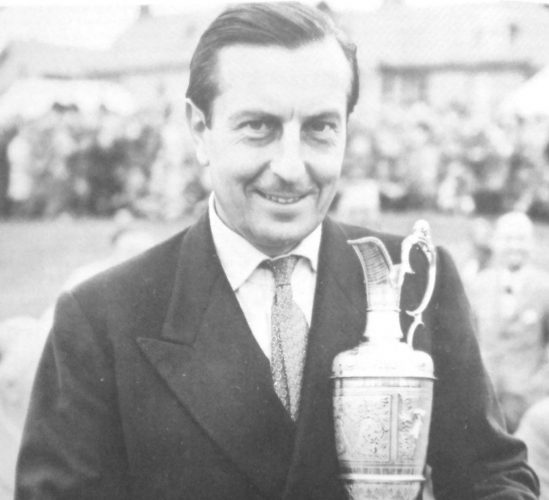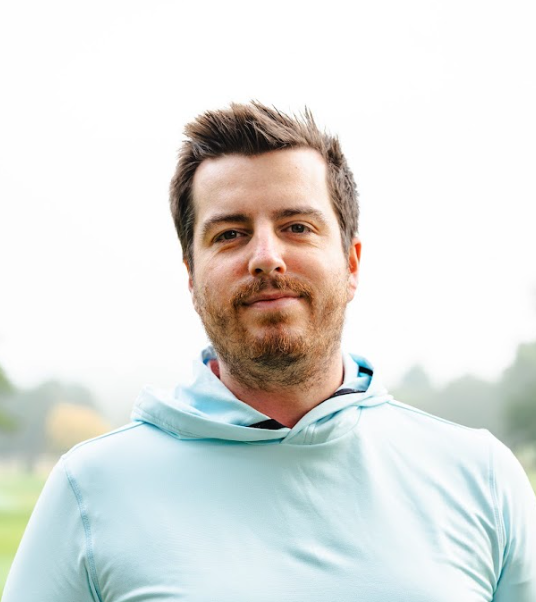Sir Henry Cotton Becomes First Golfer To Be Recognised By English Heritage
English Heritage unveiled a ‘blue plaque’ to commemorate one of the boyhood homes of Sir Henry Cotton in East Dulwich


English Heritage unveiled a ‘blue plaque’ to commemorate one of the boyhood homes of Sir Henry Cotton in East Dulwich
Sir Henry Cotton Becomes First Golfer To Be Recognised By English Heritage
A special ceremony took place in front of 47 Crystal Palace Road, amid the type of summer showers that Henry Cotton would have brushed off many times as he entertained the public while winning three Open Championships and more than 30 international professional tournaments in a career that was interrupted between 1939-45 by the War.
Cotton, who beat the entire US Ryder Cup team when winning The Open at Carnoustie in 1937 (including Gene Sarazen, Sam Snead and Byron Nelson), would later repay the sport he had loved all his life by becoming a leading founder of the Golf Foundation in 1952, a charity that today thrives in encouraging young people from all backgrounds and circumstances to enjoy the playing and personal benefits of golf.

Members of the Golf Foundation team were present yesterday and were “thrilled” to see the unveiling of the blue plaque in honour of Sir Henry.
Henry Cotton’s family moved from Cheshire to London in around 1913, with Henry first attending school in Peckham and then Reigate Grammar, before winning a scholarship to Alleyn’s School, Dulwich.
Rupert Hambro, Blue Plaques Panel Member for English Heritage, explained that Henry moved to the house on Crystal Palace Road at aged 15 with his parents and brother Leslie (who would also become a pro golfer) in 1922.
Subscribe to the Golf Monthly newsletter to stay up to date with all the latest tour news, equipment news, reviews, head-to-heads and buyer’s guides from our team of experienced experts.

Young Henry would practise his golf swing in the back garden and in adjacent garages.
Dennis Lomas, Chairman of the Edward Alleyn Golf Society, informed the audience that a row at the school erupted when Henry, an outstanding cricketer and Surrey batting prospect, along with three other boys, refused to keep carrying the kit bag for the prefects.
Refusing the cane for this action, Cotton never padded up for the school again and instead golf became his primary obsession; he and Leslie becoming a fixture at nearby Aquarius Golf Club in Honor Oak, where a celebratory lunch party was held yesterday.

Guests were able to see the unique golf course built on top of a reservoir with stunning views across London.
Other speakers at the unveiling included the Mayor of Southwark, Cllr Charlie Smith, and Jim Halliday, Secretary of Aquarius GC, who said: “Our historical connection with Henry Cotton remains an integral part of the heritage of this club.”
BBC broadcaster Peter Alliss, who performed the unveiling of the blue plaque said he felt “very proud” to have known Cotton.
Alliss said: “I still cherish the letter that Henry wrote to me, congratulating me on my first win in the Assistants’ Championship… I am sure this plaque for Sir Henry will create great interest in this local area and for golfers and other members of the public who see it when passing by.”

Brendon Pyle, Chief Executive of the Golf Foundation, said: “Sir Henry Cotton was a vital figure in this charity’s beginnings and growth back in the early fifties and we are thrilled to be here today.
When starting the Foundation with his friends he summed it up so well when he said ‘we should give the game, without compromise, without intimidation, without prejudice, to as many as we possibly could’.
“The Golf Foundation works hard to help youngsters from all backgrounds to secure a pathway from golf in schools to enjoying life as a junior player at club level, and we hope Sir Henry would be impressed with our reach and impact as a charity today, while our values still correspond closely with those of the great man.”
Brendon Pyle added that in this very area of South London, a partnership with Crystal Palace Football Club (the Palace for Life Foundation) and the Premier League had helped many young people from a traditionally football community experience golf in schools with the opportunity to take their sport further.
Interestingly, the Golf Foundation is 65 this year, a fact pointed out by a few at the ceremony as they remembered the ‘Dunlop 65’ golf ball, named after Cotton’s epic 65 in the 1934 Open at Royal St George’s, a championship record that stood for 43 years!

Elliott Heath is our News Editor and has been with Golf Monthly since early 2016 after graduating with a degree in Sports Journalism. He covered the 2022 and 2025 Masters from Augusta National and was there by the 18th green to watch Rory McIlroy complete the career grand slam. He has also covered five Open Championships on-site including the 150th at St Andrews.